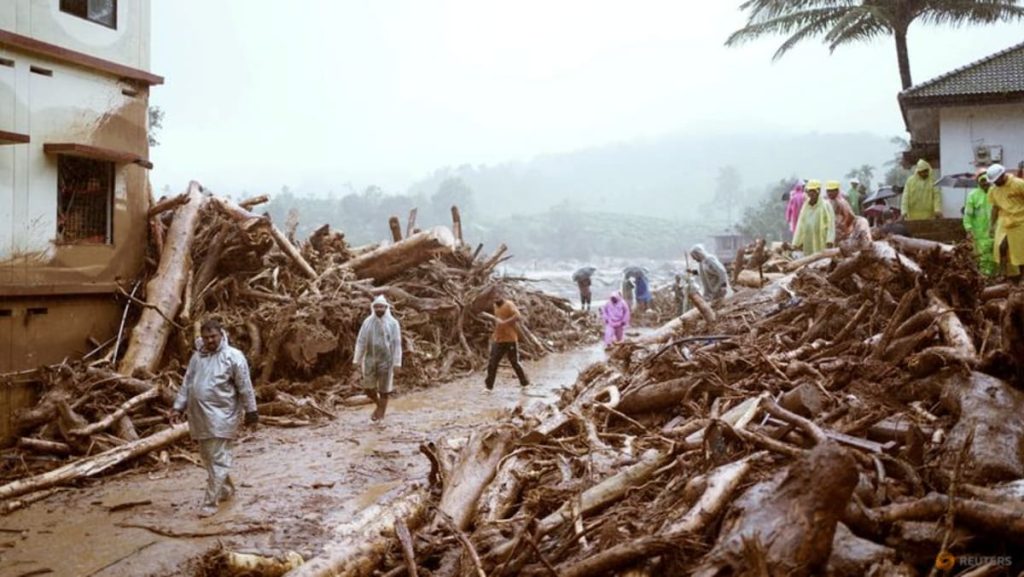Nearly 1,000 people have been rescued after devastating landslides in the hills of Wayanad district in India’s Kerala state, with at least 151 people confirmed dead and many still missing. The landslides, triggered by heavy rain, occurred in one of India’s most popular tourist destinations, causing hillsides to collapse and sending mud, water, and boulders through tea and cardamom estates, as well as small settlements. This disaster is considered the worst in Kerala since the deadly floods in 2018.
State Chief Minister’s spokesman, P M Manoj, confirmed the death toll of 151 and stated that 187 people were still missing. The Indian Army has successfully rescued 1,000 individuals and is working on constructing an alternate bridge to replace the main one destroyed in the disaster. Efforts are being made to search the entire uphill area for any stranded individuals and to recover as many bodies as possible, according to M R Ajith Kumar, a state law and order official.
The landslides primarily affected the lower valley areas where people were residing, after originating at the top. Nearly 350 out of 400 registered houses in the impacted region have been damaged, as reported by Asianet TV, quoting district officials. The heavy rainfall, which continued for a day and hindered rescue operations, is expected to ease up on Wednesday, although the area is anticipated to receive more rain throughout the day.
This tragic event has highlighted the need for greater preemptive measures and disaster management strategies in regions prone to such natural calamities. The state authorities have been focusing on locating missing individuals and providing necessary support to affected residents. The Indian Army’s prompt response in conducting rescue operations has been instrumental in saving many lives and initiating the process of restoring critical infrastructure such as bridges in the affected area.
The magnitude of the landslides and the resulting destruction underscore the vulnerability of communities living in hilly terrains during the monsoon season. With the unpredictable and intensifying effects of climate change, there is an urgent requirement for better forecasting mechanisms, early warning systems, and effective evacuation plans to mitigate the impact of such disasters. The collaborative efforts of government agencies, civil society organizations, and local communities are crucial in addressing the immediate aftermath of such events and in implementing long-term strategies for disaster risk reduction.
The resilience and solidarity demonstrated by the residents of Wayanad district in the face of this tragedy have been commendable, with individuals coming together to support each other and aid in the rescue and relief operations. As the search and recovery efforts continue, there is a somber acknowledgment of the lives lost and the long road to recovery ahead for the affected communities. In times of crisis, the spirit of compassion and unity shines through, offering hope for a better future and a collective commitment to building a more resilient society in the face of natural disasters.


